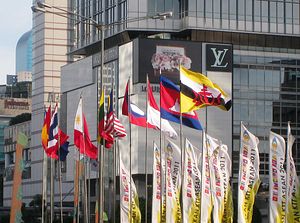While the headline-grabbing outcome from the recent ASEAN Summit in Thailand was the grouping’s formal adoption of an Indo-Pacific Outlook, there were other notable developments that occurred as well. Among these was the setting up of a new satellite facility in Thailand tied to ASEAN’s longstanding attempts to build a more robust and interconnected network for humanitarian assistance and disaster relief across the region.
As I have observed before, being home to Southeast Asia, which is one of the world’s most disaster-prone subregions, ASEAN has been working on setting up new institutions to strengthen regional capabilities to respond to natural disasters. Following the ratification of the ASEAN Agreement on Disaster Management and Emergency Response (AADMER) in 2009, Southeast Asian states set up an ASEAN Coordinating Center for Humanitarian Assistance on Disaster Management (the AHA Center) in 2011 in Jakarta to facilitate regional and international collaboration, with the Emergency Rapid Assessment Team (ERAT) brought to bear to provide dozens of rapidly deployable experts as well. ASEAN has since attempted to further develop its approach, following the inking of the ASEAN Declaration on One ASEAN, One Response in 2016.
One aspect of ASEAN’s humanitarian assistance and disaster relief (HADR) response is the Disaster Emergency Logistics System for ASEAN (DELSA), a mechanism established in 2012 that is meant to facilitate the quick provision of relief items to Southeast Asian states in post-disaster emergency situations. Since its establishment in 2012, DELSA has seen some incremental progress over the years, and one part of this effort has been the establishment of regional facilities, including a regional warehouse in Malaysia and a satellite warehouse in the Philippines.
Over the weekend, this line of effort was in the headlines with the launch of another new facility in Thailand. At the 34th ASEAN Summit, which was led by Thailand as the holder of the annually rotating ASEAN chairmanship, Southeast Asian leaders launched a new satellite warehouse in Chainat Province, Thailand, in yet another notable development within DELSA and for ASEAN’s HADR approach more generally.
The establishment of the new facility should be seen as just the latest in a series of warehouses that have been set up in the region, including in Malaysia and the Philippines. Seen from that perspective, the new warehouse will further enable the rapid mobilization and distribution of relief items to disaster-affected ASEAN member states. This is especially the case given Thailand’s location next to other neighboring mainland Southeast Asian states that also remain vulnerable to natural disasters.

































